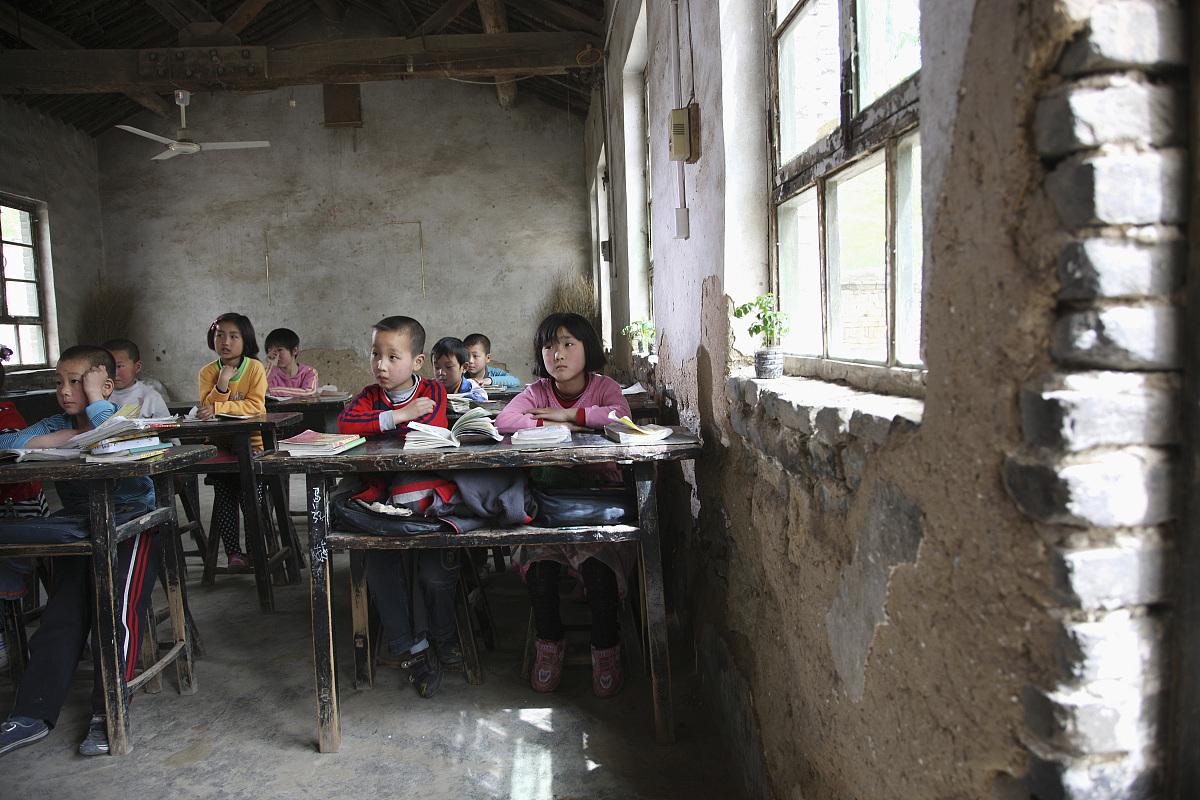By Tom McGregor, CCTV.com Panview commentator and editor
The income inequality gap between China's cities and rural communities remains a huge divide that could result in a slowdown of long-term economic growth rates.
China has enjoyed rapid development and urbanization in the past few decades, but Beijing can't ignore its agricultural regions, since farmers are growing crops and raising livestock to feed the nation.

Meanwhile, hundreds of millions of Chinese migrants have flooded into cities causing severe overcrowding conditions. Hence, more migrants should return to their hometowns to raise families.
The best solution is not to hand over huge government subsidies to local farm villages, which could get misused, but a better strategy would be to improve rural schools and provide "digital learning" programs to fill the void.
Deleting the digital divide
To secure a better future for farm villagers, the government should focus on offering stronger education resources for the rural youth generation.
In Shanghai, students are scoring high marks in exams and performing at a much higher level in science and math compared to students from other countries around the world.
But rural students continue to lag behind, on account of poor education infrastructure, shortages of qualified teachers and little access to state-of-the-art learning materials.
Beijing has moved forward to tackle challenges confronting the rural education system.
According to China Daily, China's Ministry of Education pledged to spend RMB500 million (US$74bn.) from 2016 to 2020 to build more schools and train teachers in rural areas.
In 2014, Beijing announced a "gone digital" campaign to provide access to digital teaching devices and resources to 63,500 small schools in remote and mountainous regions of Southwest China.
Training the trainers
Beijing holds the correct motives to install digital satellite receivers, computers, flat screen TVs and electronic white boards in rural schools, but there’s a concern.
Most elementary village schools have one teacher to teach all courses. They have lived in isolation for so long, many rural teachers are unfamiliar with digital devices. Bringing digital-assisted education to students only worked when the teacher knows how to use them.
Shaanxi Normal University (SNU), a teacher's school in Western China, had launched an online distance learning project in 2003. The program gives courses to train teachers and offers certifications upon completion.
The SNU School of Distance Education developed over 400 courses on 18 themes, linked to a Website serving as a resource hub and online chat group.
Rural teachers get more familiar with digital devices for use in the classroom.
Additionally, the government, private companies and charitable organizations have joined together to bring hope for rural communities.
Hope Schools
Samsung, South Korean electronics conglomerate, has opened a Samsung China division that has scored huge profits selling its devices in the country. To return the favor, Samsung China has engaged in charitable education initiatives to benefit rural schools.
Samsung China has work with the China Youth Development Fund since 2004. The electronics giant has donated over RMB200 million ($US29 million) to build 150 'Hope' elementary schools in 28 Chinese provinces.
81 'Hope' schools come equipped with electronic devices and computers, along with internet hook-ups (WiFi).
"Samsung China will give full play to our information technology (IT) and high-end products, as well as to our advantages in internal resources, in order to improve the educational quality in those rural areas," Yun Seong-he, senior vice president of Samsung China human resources, told Xinhua.
"Students there will have equal rights with those in big cities," added Yun. "They will know more about the world and realize their dreams."
Computer-assisted learning
Researchers at the University of Stanford in Palo Alto, Ca. USA have witnessed first-hand how computer-assisted learning can improve academic performance of rural students.
In June 2011, Futurity, a Website, featured Scott Rozell, an economist at Stanford, who conducted a study on children attending Chunlei Migrant School, a private institute in the Beijing suburbs.
"Ask them if they want to go to high school and college and they'll all say, 'yes,'" said Rozelle. "But they're not going to go there without a lot of help."
Stanford University coordinated with the Rural Education Action Project (REAP) to provide students at Chunlei School with computers and assistants to demonstrate how to use the devices to learn basic education skills, such as fractions.
After 13 weeks of intensive computer-based learning, the migrant children had dramatically improved their math scores while 20 percent of students were more eager to learn.
Taking a balanced approach
We all would agree that students in rural schools deserve greater access to digital devices for enhanced learning. But relying solely on computer-based learning will not deliver a miracle. Students need teachers to give them hands-on learning skills.
"Though online education has made up for some deficiencies, learning from a computer is far different than learning face-to-face from a teacher," Chen Guiying, a teacher at an elementary school in Hexi Village, Yongtai County, Fujian Province, told Xinhua.
Chen is correct, teachers, especially those giving knowledge to young children, are required to be in the classroom. Digital learning can be an effective tool, but only if a good teacher shows them the right path to obtain knowledge.
(The opinions expressed here do not necessarily reflect the opinions of Panview or CCTV.com)

Panview offers a new window of understanding the world as well as China through the views, opinions, and analysis of experts. We also welcome outside submissions, so feel free to send in your own editorials to "globalopinion@vip.cntv.cn" for consideration.
















